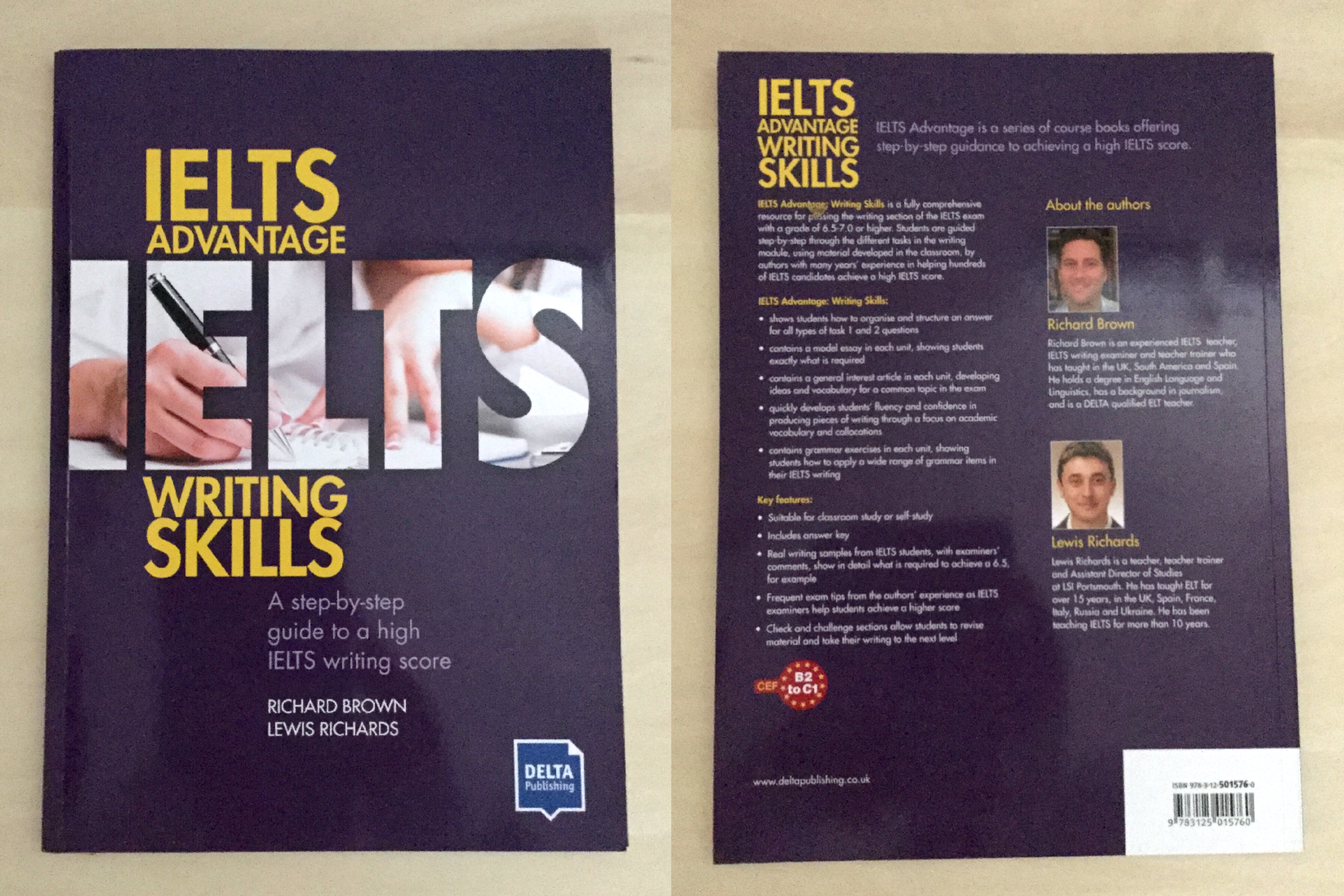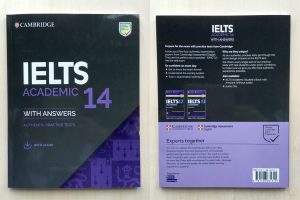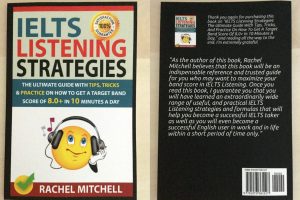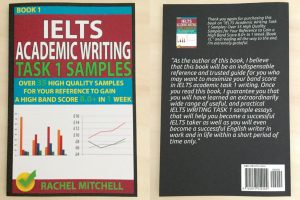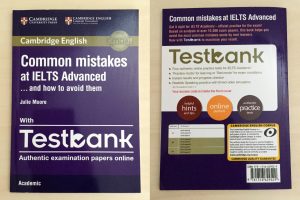分かりやすいハイスコアを目指すIELTSライティング参考書
テーマ型の細分化されたユニットで、解説がポイントに縛られており、全体的なロードマップ、プロセスをもとに分かりやすいテキストとなっております。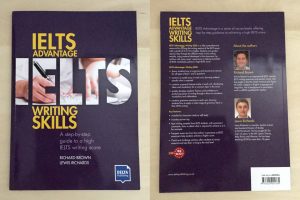
Contents
Introduction
Unit 1 Advantages and disadvantages essays 1: Living abroad
Spotlight
1 Writing about life changes and experiences
2 Verb patterns
• Model essay: Advantages and disadvantages
• Structure and linking: Organizing your essay
• Writing introductions
• Writing conclusions
Exam skills
1 Topic sentences
2 Avoiding generalizations in your writing
Unit 2 Problem and solution essays
1: Education and teaching
• Spotlight
1 Collocations for writing about education
2 Academic language for writing about solutions
•Model essay: Problems and solutions
•Structure and linking: Contrasting ideas
• Language workout: Word-building
• Grammar and phrases for introductions
•Exam skills
1 Grammar and vocabulary for writing conclusions
2 Building a good paragraph
Unit 3 Opinion essays 1: Crime
• Spotlight
1 Key language for writing about crime
2 Key structures: make/let/allow
•Model essay: Opinions
•Structure and linking: Supporting arguments and opinions
•Writing introductions for opinion essays
•Dealing with discussion essays
• Exam skills
1 Expressing someone else’s opinion
2 Using articles correctly
Unit 4 Advantages and disadvantages essays 2: Work
•Spotlight
1 Key language for writing about work and careers
2 Avoiding generalizations: using tend (not) to .
•Model essay: Advantages and disadvantages
• Structure and linking: in spite of/ despite
• Language workout: Word formation
• Exam skills
1 Using pronouns to link ideas and avoid repetition
2 Using the passive
3 Key adverbs for emphasis, opinion and style
Unit 5 Problem and solution essays 2: Cities
• Spotlight
1 Collocations and common phrases about cities
2 Singular and plural forms
•Model essay: Problems and solutions
• Structure and linking: in order to / so as to / so that
• Language workout: Word-building
•General vocabulary for writing about solutions
•Exam skills
1 Developing topic sentences
2 Using the second conditional to write about solutions
Unit 6 Opinion essays 2: Running a business
• Spotlight
1 Qualifying your opinion
2 Giving an opinion about future trends
• Model essay: Opinions
• Structure and linking: instead (of)
• Relative clauses .
•Exam skills
1 Checking and editing your essays
2 Using noun phrases
Unit 7 Graphs with a trend
•Spotlight
1 Re-wording the introduction
2 Writing an overview
3 Language to describe changes 1: Verbs and adverbs
4 Language to describe changes 2: Adjectives and nouns
•Model answer: Graphs with a trend
• Exam skills
1 Joining two changes together
2 Prepositions and articles
3 Commenting on the data in a graph
• Next steps
1 Writing about graphs with a future trend
2 Tables and bar graphs with trends
Unit 8 Comparative graphs
• Spotlight
1 key language for making comparisons
2 More comparative structures
3 Advanced comparatives and linking devices
4 Describing numbers Model answer: Comparative graphs .
•Exam skills
1 Numerical comparatives
2 Ranking information
3 Improving your writing style .
•Next steps
1 Dealing with more than one graph
2 Developing your range of language and vocabulary
Unit 9 Processes and maps
•Spotlight
1 Using the present simple passive to describe a process
2 Linking stages together
• Exam skills
1 Giving extra information about a stage
2 Writing the introduction and overview Model answer: Processes
• Exam skills
3 Grammar and vocabulary for maps
4 Noun phrases for maps
•Model answer: Maps
Answer key
Sample student answers
Introduction
Aim of the book IELTS Advantage Writing Skills is designed for students who want to achieve a score of 6.5-7.0 or higher in the Writing module of the Academic IELTS exam. We know that most candidates are aiming to get at least 6.5, either to study at university, to work abroad, for visa purposes or to have proof of a good level of English.
The book aims to take your writing to this level, based on our many years of successfully preparing students for the IELTS exam, and our experience as IELTS Writing examiners. All the exercises in the book have been developed in the classroom, and the material has helped hundreds of IELTS students to achieve high Writing scores. The book is designed so that it can be used either in class with a teacher or as a self-study book as you prepare for the exam on your own.
About the exam
IELTS examiners are looking for four different things, and the book is designed to help you in each of these areas:
• Vocabulary: You need to have a good range of academic words and phrases for the main IELTS topics.
• Grammar: You need to use accurate grammar and a range of complex structures (for example relative clauses, noun phrases, conditionals).
• Organization: You need to write clear, well-organized paragraphs, and an answer which is easy to follow.
• Ideas and arguments: You need to make sure you have well-developed ideas, that you answer the question fully and that you give a clear point of view.
The IELTS scoring system
The IELTS exam gives you a score from 1 to 9, in bands of 0.5. A score of 9.0 is native-speaker level, but in fact many native speakers fail to achieve a 9.0, so be realistic! The Common European Framework of languages categorizes IELTS scores like this:
図表1
| level | CEF Level | IELTS scores |
| Upper-Intermediate | B2 | 5.0/5.5/6.0 |
| Advanced | C1 | 6.5/7.0 |
| Upper-Advanced | C2 | 7.5+ |
Here is our guide to what you can normally do with these scores. However, be sure to check with the employer or university you are applying to.
5.5-6.0 Entry onto a university Foundation course
6.0-6.5 Entry onto a Bachelor’s degree course
6.5-7.0 Entry onto a Master’s degree course
+7.0 Normally required to work in English-speaking countries in professions such as
medicine, dentistry, law and accounting
Organization of the book
Units 1-6 focus on Task 2, which is the academic essay. We have divided Task 2 into three types:
• Units 1 and 4 look at advantages and disadvantages essays. In this type of essay, you have to discuss the positive and negative sides of a topic (for example ‘The advantages and disadvantages of working from home’) and then express your view.
• Units 2 and 5 look at problem and solution essays. You have to explain the causes of a common social problem (for example ‘Obesity’) and make some suggestions about how to solve it.
• Units 3 and 6 look at opinion essays. You have to state your view about a topic (for example ‘Should smoking be banned in public places?) then justify your opinion.
The units build on each other, so when you study opinion essays, for example, we advise you to study Unit 3 first, and then Unit 6.
have to state your view about a topic (for
Each unit is built around two texts: an introductory text, which includes useful grammar,
ideas and vocabulary, and a model essay, which guides you as you write.
Units 7-9 focus on Task 1, in which you need to describe graphs, charts or maps.
• Unit 7 shows you how to write about graphs with a trend (changes over time)
• Unit 8 looks at how to describe graphs and charts where you have to compare data.
• Unit 9 describes how to write about processes and maps.
Features of the book
• Try it first!: Before you start each unit, you are encouraged to write an answer to the question on the first page. It will help to show up the strong and weak points of your writing, and see what you need to improve.
• Interesting texts: The book contains a range of texts in different styles (newspaper articles, interviews, chat-room comments and so on). These aim to make the topics enioyable and to introduce you to a range of natural and useful vocabulary. They have been specially written for this course to focus on the areas of essay-writing needed in the IELTS exam.
• IELTS grammar exercises: Each unit contains grammar exercises which show you how to apply grammar rules to your writing. We have selected the grammar items which we think are the most useful and relevant to the IELTS Writing exam, and show you how to use them in both Task 1 and Task 2.
• Academic vocabulary for writing: The vocabulary you need for IELTS Writing is significantly different from general English or the vocabulary used in speaking, so the book contains many exercises which show you how to write using the correct academic style.
• Collocations and chunks: The exercises in the book include a range of collocations and chunks – words which commonly go together (for example have a good work-life balance), so that you can quickly and easily improve your written academic vocabulary.
• Model essays/answers: For each unit, we have written a model answer. These will help you to see what the examiners are looking for. and give you guidance about how to write your answers.
• Structure and linking: Many candidates achieve a lower score than they could get in IELTS Writing because their answers are not organized in the correct way. Each unit has exercises to help you organize your writing in the best way possible.
• Exam skills: Each unit has exercises which show you how to develop your techniques ready for the exam. We include exercises, for example, on how to write an introduction to an essay and how to build a good paragraph.
• Sample student answers: Each unit contains at least one real answer written by an IELTS student. The answers are different levels, so that you can see what is required to achieve a 6.0 or a 7.0, for example. We have given examiner’s comments and suggestions at the end of each answer, to help you learn from these answers.
• Check and challenge: At the end of each unit, you have the chance to revise the language you have studied, and to extend your language with extra challenges.
• Practice questions: At the end of each of the Check and challenge pages, there are one or two extra questions for you to apply what you’ve learned in the unit:
We hope that you enjoy using this book and wish you every success in the IELTS exam! Richard Brown and Lewis Richards

